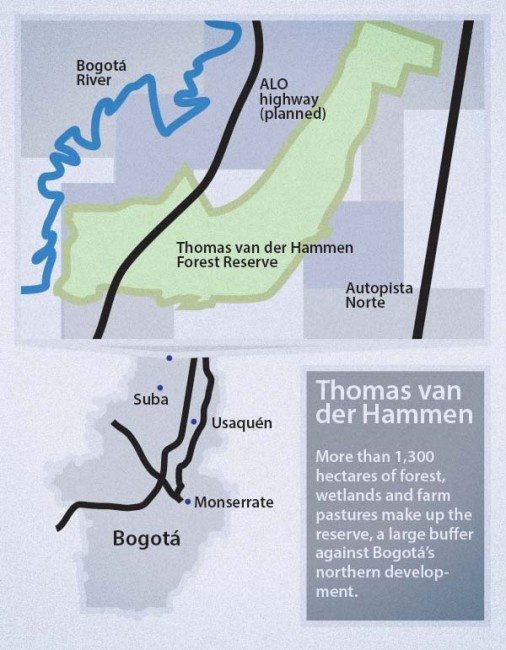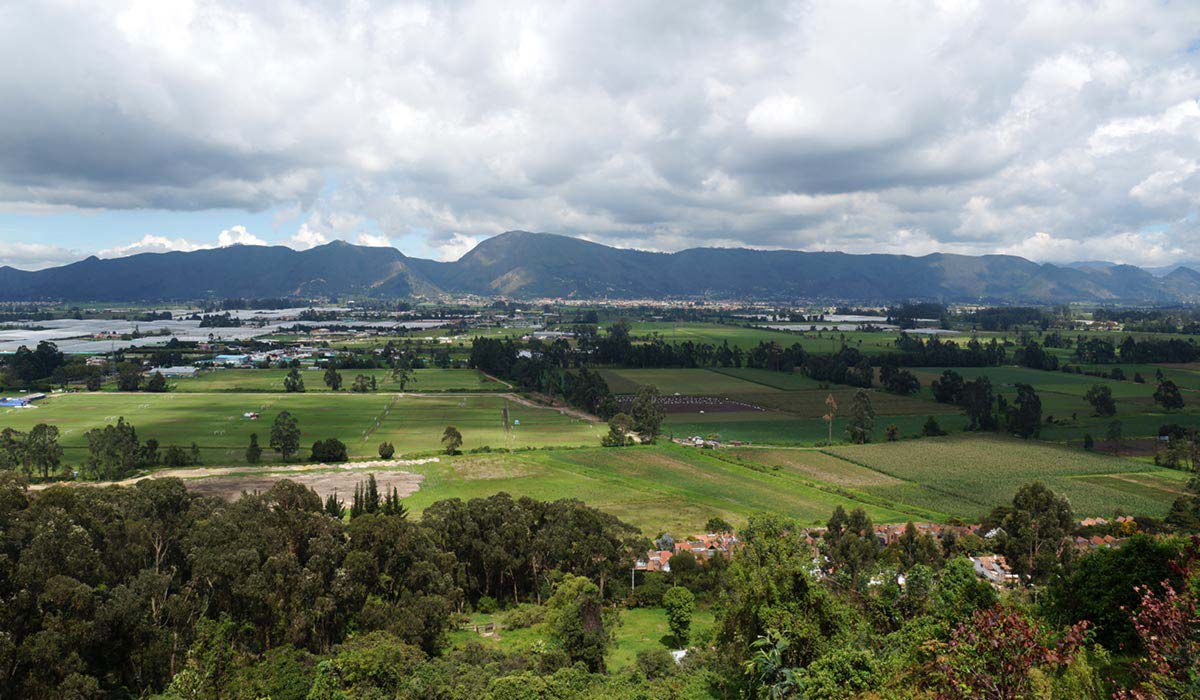[dropcap]T[/dropcap]he choice is not ambiguous. Develop at least 85 percent of a patch of preserved land north of Bogotá or use it to build Latin America’s largest urban forest.
Those diametrically opposed options have opened the largest rift yet between Mayor Enrique Peñalosa’s administration and his predecessor, former Mayor Gustavo Petro.
At stake is the Thomas van der Hammen Forest Reserve, a nearly 1,400 hectare swath of undeveloped land on the city’s northern edge.

The term “forest” is perhaps somewhat inaccurate. Most of the land is currently being used as pasture for cow farmers. But portions of the reserve also contain delicate wetlands and other mountain and savannah ecosystems that are home to dozens of plant and bird species, as well as other wildlife.
Peñalosa’s Plan
Peñalosa has had his eye on the Thomas van der Hammen Reserve ever since his first term as mayor more than 15 years ago.
He argues that a sustainable development in the reserve is not just possible, but the best way to grow Bogotá to the north. In other words, the city will continue to grow with or without planning, and it’s best to build something thoughtful rather than allow chaotic development, according to Peñalosa.
Most of the development in the reserve would be part of a new Peace City (Ciudad Paz) — a planned urbanization featuring hundreds of thousands of residences, parks, greenways and mass transit accommodations.
The mayor has said it could eventually house as many as 3 million residents by the year 2056.
Also primary among the mayor’s goals for the reserve is the construction of the Longitudinal West Avenue (ALO), which would provide a major entrance and exit to the city’s northwest.
Only a handful of major roads handle nearly all of the traffic into and out of Bogotá, causing significant congestion during holidays and even during everyday rush hours. Adding a new route could improve connectivity in the northern part of the city, suggests Peñalosa.
However, portions of the reserve to be developed are designated as protected by regional authorities. The district Secretary of the Environment has said that the administration will accept and respect any legal boundaries to development in those areas.
The mayor’s vision does include some concessions to environmentalists. It sets aside 200 hectares for greenways connecting the Bogotá River to the west with the hills that border Bogotá to the east. Plans also call for undeveloped corridors to allow wildlife movement.
And Peñalosa has repeatedly argued that planned development in northern Bogotá will actually preserve remaining green space in the surrounding savannah.
Petro’s Plan
Former Mayor Gustavo Petro saw in the Thomas van der Hammen the opportunity to create one of the city’s most significant green spaces and eventually the largest urban forest in the region.
He proposed to use eminent domain to purchase grazing land from farmers and gain city control over most of the property before planting native trees and plants in order to restore the forest to its natural state.
Progress organizing land purchases proceeded too slowly to buy up much of the reserve before the end of his term, but the administration managed nonetheless to plant more than 20,000 trees in some portions.
Environmentalists have lauded the plan as a buffer to Bogotá’s urban expansion and a critical natural environment for the native plant and animal species otherwise displaced by the city.
Bogotá’s Botanical Garden would have handled the reforestation of the reserve.
Controversy boils
Since leaving office at the end of last year, Petro has not been shy about expressing his disapproval of Peñalosa’s decision to take the Thomas van der Hammen in a totally different direction. The former mayor has taken to Twitter and Facebook, gaining a large and vocal following.
“[The Peñalosa administration] thinks biological connectivity is the same as bus lines,” said Petro on Twitter earlier this month.
“Transforming the reserve into urban soil multiplies its value by 30 times. Its owners … will get rich sacrificing the future of Bogotanos,” he said on Facebook in February. “This type of thinking, with any citizen support, has life on this planet at the point of disappearing.”
Mayor Peñalosa has continued to defend the plan as necessary to prepare for the city’s future growth.
“In the next 40 years, Bogotá will have to grow three times as large,” explained Peñalosa in a statement in January. “Ciudad Paz seeks to organize the capital’s growth in a way that we can have a city that doesn’t risk harming the savannah.”
He has also questioned whether the reserve deserves to be protected in the first place.
“The reserve is the only in the world that doesn’t have any trees — they’re pastures,” he said. “Obviously one wants to build forest reserves in every city, but Bogotá’s citizens live today in what was once forest.”
Next steps
Nothing is going to happen to the Thomas van der Hammen quite yet. Peñalosa’s plan still has to cut through lots of red tape before any action can be taken, and there’s no guarantee the administration will get permission from environmental authorities.
The district Ministry of the Environment will first have to submit an official petition to the Cundinamarca Autonomous Regional Corporation (CAR) requesting that the protected designation for parts of the reserve be lifted. Peñalosa made a similar request during his first term and was turned down.
If the CAR grants the request, planning could proceed, but there would still be lots of design and construction permitting required before the first buildings or roads break ground.
That means environmentalists who think Peñalosa’s plan would be a disaster for Bogotá’s open spaces still have time to fight it. And Peñalosa still has time to convince Bogotanos to buy into Peace City.
In the meantime, 1,395 hectares hang in the balance.

